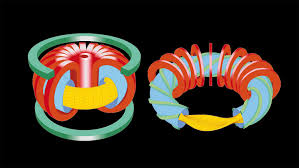
Breaking News
 In A Desperate Attempt To Stop The Bleeding,...
In A Desperate Attempt To Stop The Bleeding,...
 "Free" Health Care Will Not Fix America's Medical Crisis
"Free" Health Care Will Not Fix America's Medical Crisis
 In The First Major Test Of Dominion Voting Machines Since The Company Was Sold To Republicans,
In The First Major Test Of Dominion Voting Machines Since The Company Was Sold To Republicans,
 New Year's Eve With Alex Jones & An Incredible Lineup of Informative Guests & Patriots...
New Year's Eve With Alex Jones & An Incredible Lineup of Informative Guests & Patriots...
Top Tech News
 Laser weapons go mobile on US Army small vehicles
Laser weapons go mobile on US Army small vehicles
 EngineAI T800: Born to Disrupt! #EngineAI #robotics #newtechnology #newproduct
EngineAI T800: Born to Disrupt! #EngineAI #robotics #newtechnology #newproduct
 This Silicon Anode Breakthrough Could Mark A Turning Point For EV Batteries [Update]
This Silicon Anode Breakthrough Could Mark A Turning Point For EV Batteries [Update]
 Travel gadget promises to dry and iron your clothes – totally hands-free
Travel gadget promises to dry and iron your clothes – totally hands-free
 Perfect Aircrete, Kitchen Ingredients.
Perfect Aircrete, Kitchen Ingredients.
 Futuristic pixel-raising display lets you feel what's onscreen
Futuristic pixel-raising display lets you feel what's onscreen
 Cutting-Edge Facility Generates Pure Water and Hydrogen Fuel from Seawater for Mere Pennies
Cutting-Edge Facility Generates Pure Water and Hydrogen Fuel from Seawater for Mere Pennies
 This tiny dev board is packed with features for ambitious makers
This tiny dev board is packed with features for ambitious makers
 Scientists Discover Gel to Regrow Tooth Enamel
Scientists Discover Gel to Regrow Tooth Enamel
 Vitamin C and Dandelion Root Killing Cancer Cells -- as Former CDC Director Calls for COVID-19...
Vitamin C and Dandelion Root Killing Cancer Cells -- as Former CDC Director Calls for COVID-19...
Nuclear Fusion Update

Nextbigfuture has been constantly tracking nuclear fusion and advanced nuclear fission every week for the past 13 years.
The popular question is when will we have commercial nuclear fusion that has a significant impact on the energy production of the world?
MIT has spunout a tokomak fusion project into Commonwealth Fusion systems. They want to apply modular designs to high-temperature superconductors. They want to get to stronger magnets that will shrink the size and cost of the potential nuclear fusion reactor. Improved magnets would improve any nuclear fusion design that involves confinement of plasma. There is less science risk to this MIT approach but more technological risk. They are trying to accelerate the commercial use of high-temperature superconducting magnets and trying to contain their costs. Cost for superconducting magnets for past fusion projects have been $20 per watt but other applications have seen costs of $1.4 to $1.8 per watt.



